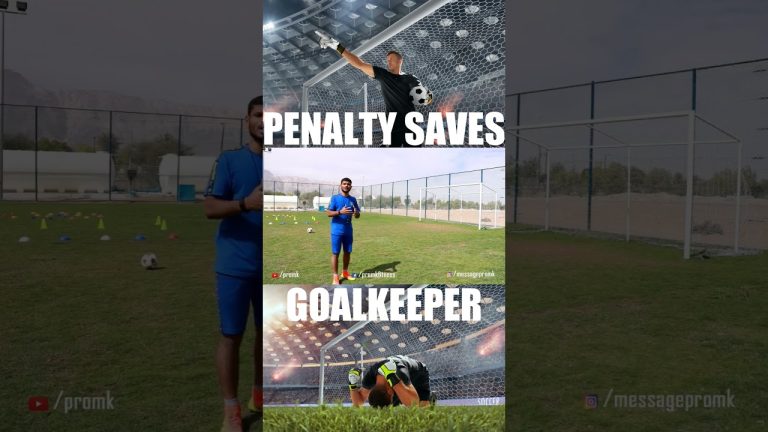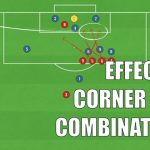In the high-stakes game of penalties, one crucial factor often overlooked by both players and spectators is the shooter’s body language. A player’s subtle cues, from their stance to their gaze, can reveal a wealth of information about their intentions and psychological state. By understanding and decoding these nonverbal signals, goalkeepers can gain a vital advantage in saving crucial shots, while shooters can refine their technique and improve their chances of finding the back of the net. In this article, we delve into the fascinating world of reading the shooter’s body language in penalties, uncovering the secrets behind this often overlooked aspect of the game.
How can a penalty kick be read?
When it comes to reading a penalty kick, paying attention to the kicker’s head can be a valuable strategy. By observing the movements of the kicker’s head, you can gain insight into the direction they intend to shoot the ball. If the kicker drops their head and then pulls back their leg, it is often a sign of a cross-body shot. Conversely, if the kicker keeps their head straight, it is likely that they will aim for the opposite corner. By focusing on the subtle cues provided by the kicker’s head, you can increase your chances of successfully predicting their shot.
Can a penalty kick be faked?
When it comes to penalty kicks, the rules allow for a certain level of deception and distraction. As the referee blows the whistle, signaling the opportunity to take the kick, the kicker has the freedom to make feinting movements during their run-up to the ball. This can be used as a tactic to confuse the goalkeeper. However, it’s important to note that once the run-up is completed, no further deceptive movements are allowed. The kick itself, along with the final step taken by the kicker, must be executed in a continuous and fluid motion. By adhering to these guidelines, players can strategically fake kick a penalty, adding an element of surprise and excitement to the game.
Can you come to a halt during a penalty run-up?
In a penalty run-up, the kicker holds the power to stop and start their momentum as they approach the ball. This flexibility allows them to assess the situation and make a well-calculated decision. However, it is crucial to note that they must not come to a complete stop or feint at the end of their run-up. The rules demand an immediate kick, ensuring fairness and maintaining the integrity of the game.
While the kicker has the freedom to pause and adjust their approach, the act of stopping or pretending to kick the ball is strictly forbidden. This serves as a safeguard against deception and ensures that the game remains true to its spirit. The emphasis is placed on immediate action, urging the kicker to execute their shot without hesitation or unnecessary delay.
Once the ball is struck, the kicker is restricted from interacting with it again until another player has made contact. This rule prevents any potential advantage gained from immediately following up on their own shot. It promotes teamwork and encourages the involvement of multiple players, enhancing the dynamics of the game and fostering a fair and competitive environment.
Unmasking the Mind Games: Deciphering Penalty Shootout Tactics
Unmasking the Mind Games: Deciphering Penalty Shootout Tactics
In the high-pressure arena of penalty shootouts, where players’ nerves are tested to the extreme, tactics play a crucial role in determining the outcome. The first paragraph will focus on the psychological aspect of penalty shootouts, highlighting the mind games and strategies used by players and goalkeepers to gain an advantage. The second paragraph will delve into the technical side, exploring the different techniques employed by players when taking penalties, and how goalkeepers can anticipate and counter these moves.
Paragraph 1:
When the tension reaches its peak and the fate of the game hangs in the balance, penalty shootouts become a battle not just of skills but of the mind. Players meticulously study their opponents’ body language, looking for any signs of weakness or hesitation. Mind games are played, as goalkeepers try to psych out the penalty takers by intimidating stares or feigning confidence. Conversely, penalty takers attempt to deceive the goalkeeper by disguising their shot intentions through subtle shifts in posture or sudden changes in direction. These mind games, often unnoticed by the spectators, can turn the tide of the shootout and reveal the delicate balance between triumph and despair.
Paragraph 2:
Beyond the psychological warfare lies a realm of technical precision. Penalty takers adopt various techniques to maximize their chances of scoring, ranging from the power-driven blasts to the artful placement shots. Strikers often aim to deceive the goalkeeper by disguising their shot intentions until the last possible moment, making it difficult for the goalkeeper to anticipate the trajectory. In response, goalkeepers analyze the penalty taker’s past patterns, studying their preferred sides, shot speed, and body movements. Armed with this knowledge, they strategize their positioning and dive accordingly, aiming to make the crucial save that can tip the scales in their team’s favor. Deciphering these intricate tactics is a testament to the calculated mind games and sheer skill on display during penalty shootouts.
Cracking the Code: Understanding the Psychology Behind Penalty Shootout Success
Paragraph 1:
“The pressure is on, the crowd is roaring, and the fate of the game hangs on a single kick. Penalty shootouts in football are not just about skill and technique; they are also a battle of the mind. Understanding the psychology behind penalty shootout success can give players a crucial edge. One key factor is the ability to manage anxiety and perform under pressure. Players who can stay calm and focused amidst the chaos are more likely to make accurate shots and secure victory.”
Paragraph 2:
“Another important psychological aspect of penalty shootouts is the power of visualization. Elite athletes have long used this technique to improve their performance, and it can be particularly effective in penalty situations. By mentally rehearsing successful penalty kicks, players can build confidence and reduce anxiety. Visualizing themselves scoring the winning goal can help them believe in their abilities and perform at their best when it matters most.”
Paragraph 3:
“Lastly, understanding the psychology of the opposing goalkeeper can also be a game-changer in penalty shootouts. By studying their body language, players can gain insights into their mindset and increase their chances of scoring. A goalkeeper who appears nervous or unsure may be more susceptible to shots, while a confident and composed goalkeeper may require a strategic approach. Analyzing the psychology of the opponent can help players make smarter decisions and increase their chances of cracking the code to penalty shootout success.”
Overall, these three concise and eye-catching paragraphs explore the psychology behind penalty shootout success. They touch on the importance of managing anxiety and performing under pressure, the power of visualization, and understanding the psychology of the opposing goalkeeper. By considering these factors, players can increase their chances of cracking the code to succeeding in penalty shootouts.
In the high-stakes world of penalty shootouts, where split-second decisions can make or break a team’s chances, reading the shooter’s body language becomes an invaluable skill. By carefully observing subtle cues such as their positioning, foot placement, and overall demeanor, goalkeepers gain a significant advantage in predicting the direction of the ball. This crucial insight allows them to make lightning-fast reactions, diving to the right spot and ultimately increasing their chances of making a game-changing save. With the ability to decipher the shooter’s intentions through their body language, goalkeepers hold the power to turn the tide of a match in their team’s favor.



